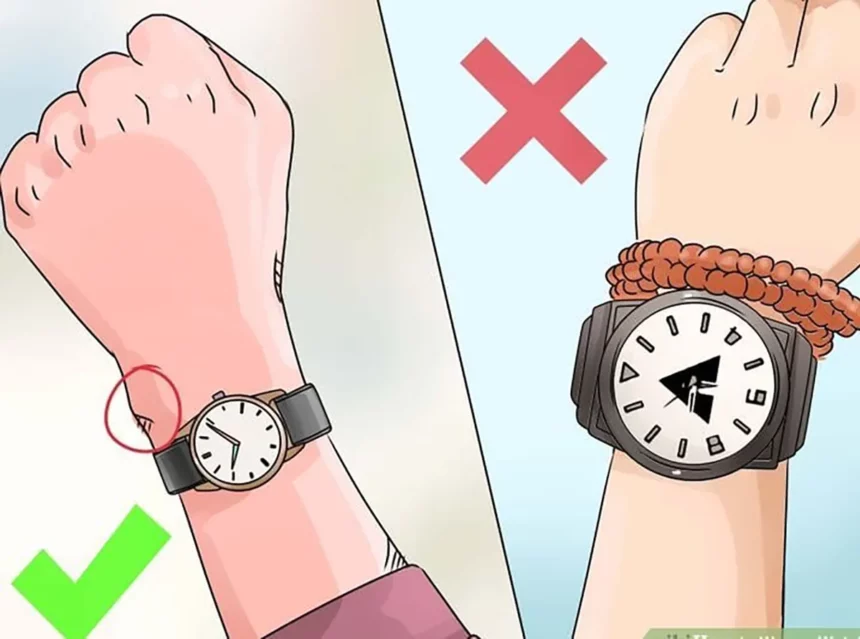During World War I soldiers tired of fishing around their pockets to find their pocket watch, started wearing it on a bracelet on their wrists. Until then, a watch worn on a bracelet was considered strictly women’s fashion. Initially ridiculed by the public as a silly trend, wristwatches soon became the norm as their practicality made pocket watches obsolete. Today, a watch is more than just a functional accessory. It is a lifestyle statement.
Given the mind-boggling array of watches in different styles are sizes available for both men and women today, it is easy to pick the wrong type of watch for your lifestyle. Don’t worry, help is at hand.
We’ve spoken to the Swiss watch experts who help QNET develop our range of luxury watches and they are happy to share these tips with you on how to wear a watch properly.
Don’t wear a watch with a face that is too big.
Watch faces are measured in millimeters. Men’s watches average between 34mm-50mm, although they can be larger. You should never wear a watch bigger than 50mm, at most, but 34mm-40mm is standard and ideal for both men and women.
Decide on which wrist you want to wear your watch.
There is no “correct” side. Choose the wrist that is most comfortable and where your watch won’t get in the way of your movements. This is typically the non-dominant hand, as it might be uncomfortable to write with a watch under your wrist.
Wear your watch beside your wrist bone.
Make sure that the face sits right next to the bone on the outside of the wrist (the ulna). When standing, little or none of your watch should be visible beneath your shirt cuff. When wearing a long-sleeved shirt, your watch should only be fully visible when your arm is bent. Never wear your watch on top of your shirt cuff.
Wear a band that fits properly.
A watch should appear comfortable, natural, and certainly not sloppy. It may be necessary to adjust it as needed, to accommodate natural fluctuations in wrist size.
Some watches, such as dress watches and sports watches, have a prong and notch system that allows you to easily move the prong up or down a notch to tighten or loosen. Casual or formal watches can have a more complicated fastening system that requires you to adjust the size by adding or removing links. Consult the instruction manual, or ask your jeweler for help or advice on adjusting the length of your watch.
A man should never wear his wristwatch loose around his wrist.
It should move about an inch up and down your wrist as you move. The face of the watch should not slip to the side of your wrist. As a general rule, you should be able to fit a finger snugly between your wrist and the watch band.
A wristwatch should not be worn too tightly. If the watch leaves an imprint on your wrist, it is too tight and should be loosened. Women’s watches may be worn snugly, or loose around the wrist like a bracelet.








